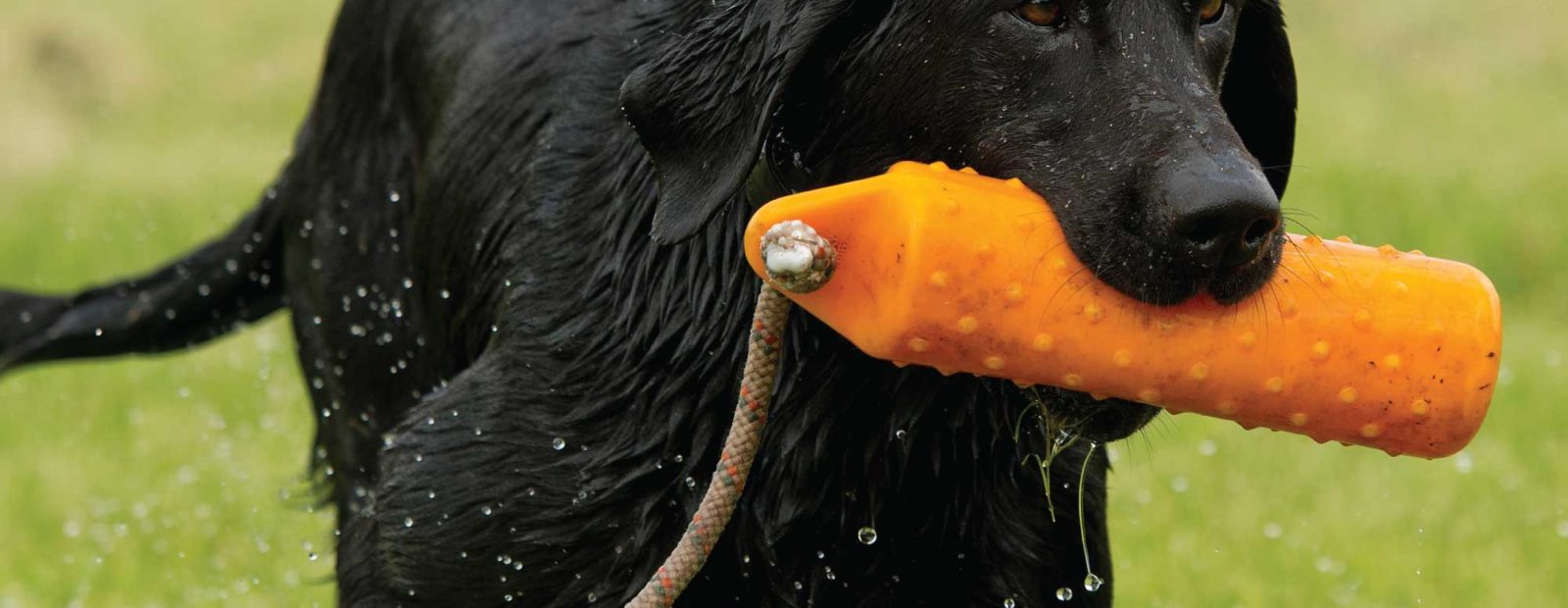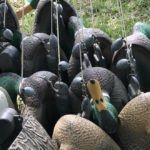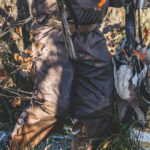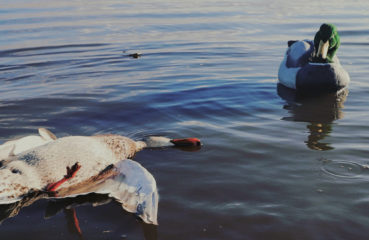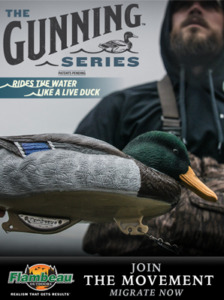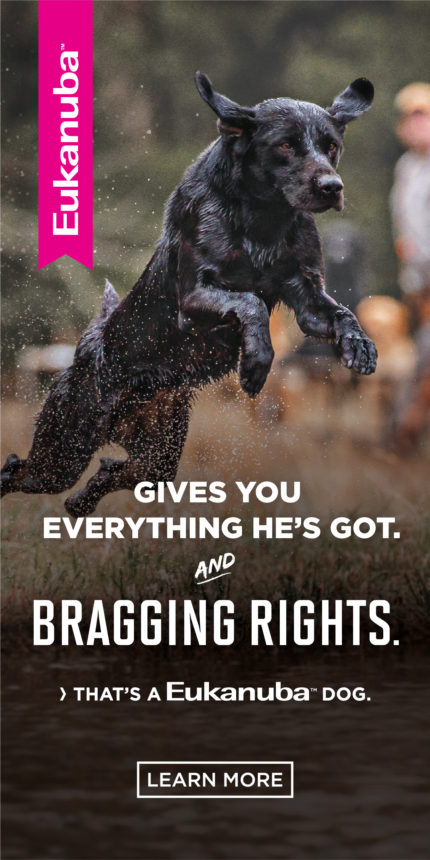Try these simple, fun drills with your dog for a better experience in the duck blind.
Our home is a perpetual work-in-progress. Both my wife and I enjoy working around our two acres on anything from adding mulch to a garden bed to trying to cultivate as much wildlife habitat as we can on our small suburban homestead.
We are fortunate to have access to some of the best “free” labor around. Her name is Raven and she’s always at our side to assist with yard chores. And by assist, I mean stealing our gloves, sniffing around for something stinky to eat, and bugging us to retrieve something every 30 seconds. Yep, Raven is our trusty, six-year-old, semi-pro Labrador Retriever.
Raven has always enjoyed following us around while we work in the yard. So, one day my wife and I had an epiphany; why not use this time and Raven’s enthusiasm to reinforce her training with some simple, fun lessons? We are amateur retriever trainers at best, but what we have observed with the two Labradors we’ve raised is they both seemed to learn more quickly and the lessons “stuck” more when the training sessions had three things in common:
- Sessions are short
- The dog has fun
- The lessons set the dog up to be successful
Try a few of these just-for-fun training lessons with your retriever while you are working in your yard during the off-season and you just might have a better duck dog when you trade in your shovel for a shotgun!
Sit. Place. Come.
These three commands are the core components of a retriever that one wants to spend time with both in a duck blind and in the home. These core commands are the basic tenets of obedience training and can be reinforced in creative ways while working in one’s yard.
Last week my wife and I were adding weed barrier fabric and mulch to a landscape bed. Weed barrier fabric is challenging enough to handle on its own, and much more so when the four paws of a happy Labrador are prancing across it, disturbing your near-perfect crescent-shaped border. This was a golden opportunity to quietly lead Raven to the nearby sidewalk, command “sit,” and finish securing the weed barrier fabric unencumbered by a bull-in-a-china shop retriever at our sides.
Place training differs slightly from the sit command in that you want the dog to go to a specific place (dog blind, platform etc.) and to remain there until released with another command. My Labrador occupies her own dog blind right outside my blind so I started working on the place command when she was a puppy. She also lives in our house where her place is a dog bed in our bedroom. It helps keep her from being constantly underfoot and allows us to somewhat limit her shedding to one room.
When working in the yard, I frequently bring along a simple place board I made from 2×4 boards and some leftover outdoor carpet. So, when I was cleaning-out a section of guttering a couple of weeks ago, I sent Raven to her place board to ensure both my safety and hers while I climbed up and down the ladder. Leave a retrieving bumper nearby as you work and now and then take a moment to toss a retrieve as a reward for successfully staying on place for a few minutes.
Come, or recall, is a command that requires consistent reinforcement. I’ve read the same comment from many professional retriever trainers; the dog should come to you on the first command and come to you every time consistently.
Again, set up your dog to be successful. When your hound is sniffing around near you as you work on your landscaping, first call the dog’s name to get her attention. Then, say “come,” “here,” or whatever command you use for recall. Do this when your dog is not distracted and you are 95 percent certain she will obey the command, thus setting her up to be successful. Do this enough times and it becomes a habit, and your retriever will recall even when faced with distractions that may occur in the duck blind.
Load Into Boats & Blinds
You don’t want your retriever’s first experience with a boat or duck blind to be on his first hunt. There are simply too many distractions and it’s a sure recipe for you to become frustrated and for your dog to possibly become shy of hopping into your boat or blind. A backyard is a familiar, low distraction setting to introduce this.
I am a huge fan of Shappell Jet Sleds—in fact, I have four of them. I use them for everything from transporting decoys to mulching landscaping beds. One day, while my wife was using a sled to move a pile of leaves to our composting area, she turned around to see our semi-pro Labrador sitting in the sled atop of a pile of leaves.
She had hopped into the sled on her own, which was great. While she was sitting in the sled I calmly walked over to her, gave her a few pats on the head, and reinforced it with a few “good girl” praises. A few minutes later I sat near the sled, called her to me, and the second she jumped in, I introduced the “load” command. The point is, she was already doing the exact behavior I wanted so I simply introduced then reinforced the “load” command each time she hopped into the sled. After a few more leaf hauling sessions she was hopping into the sled on command.

Hold Conditioning & “Blind” Retrieves
Raven’s first retrieves were of a rolled-up pair of socks I threw for her in a hallway. Ever since, she has been a sock retrieving machine. Leave no sock behind is her creed. My sons love it because they seldom have to pick-up dirty socks from their bedroom floor; that’s Raven’s job!
When working in the yard, Raven’s other favorite items to retrieve are gloves. I suppose to her they resemble socks because they are lightweight and soft to the touch. If you drop a glove around our house, don’t worry—it won’t be lost for long.
Again, we used her natural desire to carry random items to reinforce a behavior we wanted in the duck blind: fetch a dead bird and don’t drop it until it’s safely delivered to hand. Every time Raven grabbed a sock or glove, we called her to us and praised her while she pranced around proudly at our feet. We did not immediately try to take the item; instead, we repeated “hold” while praising her profusely. We set her up to be successful, then added repetition.
Lastly, I try to keep a retrieving bumper handy while working in the yard with our retriever. When she’s distracted trying to eat a dead worm, I’ll place the bumper so it’s not completely hidden but not easily spotted, either. I’ll sit her beside me with her head pointed in the general direction of her prize, aim her in the right direction with my hand, then release her by calling her name. I’ve just created a “blind” retrieve that she’ll both have to hunt a little for and be successful, thus building her trust that when I send her on a retrieve, there is something to fetch.
Here’s the deal: we’re all going to be doing some work around our home from time to time. Whether your home is a 40-acre farm, a house in the ‘burbs, or a small apartment in town, there are many opportunities to not only include your retriever but to reinforce training at the same time. Give a few of these ideas a try and you may be surprised at how much more enjoyable your time in the duck blind will be this fall.
Last modified: July 19, 2022


